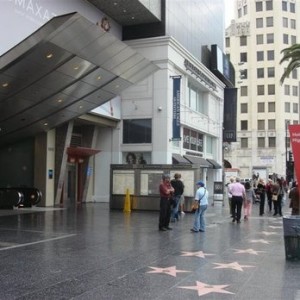The West Hollywood City Council last night endorsed Measure M, an item on the November election ballot that will increase the L.A. County sales tax and possibly result in an extension of a subway line through WeHo.
Measure M would increase the countywide sales tax to .5% to 9.5% and generate about $860 million a year for the L.A. Metropolitan Transportation Authority to improve regional bus and rail transit networks, streets and highways. For WeHo, an especially important project on Metro’s list is the extension of the northern Crenshaw/LAX Metro line, which city officials hope will go through West Hollywood. The Measure M tax increase also is projected to generate an additional $509,000 in revenue that will go directly to West Hollywood.

In a letter last week to City Councilmember Lindsey Horvath, Metro CEO Phil Washington outlined several steps his organization is taking to move the Crenshaw/LAX northern extension up its priority list. With those steps the project could begin as early as 2020. Previously it had been scheduled for 2041-2047.
The proposed extension would run to the Metro Red Line station at Hollywood Boulevard and Highland. It would connect four existing lines, the Red, Purple, Expo and Green.
But first Metro has to secure a two-thirds vote for Measure M. In 2008 another sales tax increase, Measure R, was approved with 66.7% of the vote. The Measure M sales tax increase, however, has no expiration, which has generated some opposition.
If Measure M is approved, Metro has to choose the exact route for the northern extension. Metro’s original budget for the extension assumed it would run from San Vicente and then along La Brea Avenue on WeHo’s eastern border to the Hollywood/Highland Red Line station, for a total of six miles. But Fehr & Peers, a consultant hired by the city, presented data to argue that running the extension from San Vicente to Santa Monica Boulevard for nine miles will better benefit West Hollywood and Metro by increasing ridership by more than 300%. Other options considered by Metro are running the extension from San Vicente to Fairfax Avenue and onto the Hollywood/Highland Red Line station and ending the extension at the Wilshire/Vermont Red Line station.
The city, in a press release announcing the council vote, noted that running the northern extension through West Hollywood would “provide increased access to health care destinations, such as Cedars-Sinai Medical Center, Olympia Medical Center and Miracle Mile Medical Center, and it would bring rail connections to major shopping and entertainment destinations within the City of West Hollywood, such as the Sunset Strip, Santa Monica Boulevard and the Gateway, as well as regional destinations such as the Miracle Mile, the Beverly Center, the Beverly Connection, the Hollywood Bowl, and Hollywood and Highland.”
The city has spent a lot lobbying for the extension. In July 2015, the City Council called for formation of a local advocacy committee, West Hollywood Advocates for Metro (WHAM), and established a City Council subcommittee consisting of Horvath and City Councilmember John Heilman to work with Metro. West Hollywood also has supported a regional coalition called All on Board, which is lobbying for the project.
Metro’s earlier reluctance to move the Crenshaw/LAX extension up on its schedule had led some City Council members to suggest reducing West Hollywood’s support for Measure M. Councilmember John Duran at one point suggested the city seek its own sales tax increase to gain leverage over Metro, given the ultimate ceiling for the sales tax is 10%.

If the Los Angeles Times, General Motors and Southern California Automobile Club along with politicians hadn’t led the demise of Huntington’s interurban Southern California rail system, the Pacific Electric or “Big Red Cars” you could have still commuted from downtown to West Hollywood by rail. Unfortunately, after they tore out the PE rail lines Los Angeles then created a hodgepodge of services. As for West Hollywood, please take a look at what was and now has vanished:
http://cruiselinehistory.com/downtown-los-angeles-to-beverly-hills-via-hollywood-and-west-hollywood-aboard-pacific-electrics-big-red-cars-during-the-1950s/
Subways in the land of high water tables and shifting soils is multo expensivo and doesn’t really serve that many people. Above ground rail, like the former trolley cars, would have far more stops and serve a greater number of riders. Keep in mind that whatever happens (if at all) will be intrusive and take years to accomplish. I’ll be fertilizer long before anything will happen to alleviate traffic and transit woes in WEHO. I’m surprised that fewer have offered comments on this article.
I am all for subway access in WeHo. But this and other vague ideas about the route mean NOTHING.
Sales tax is high enough and if no guarantee the subway WILL go through weho, It’s unfair to increase the sales tax.